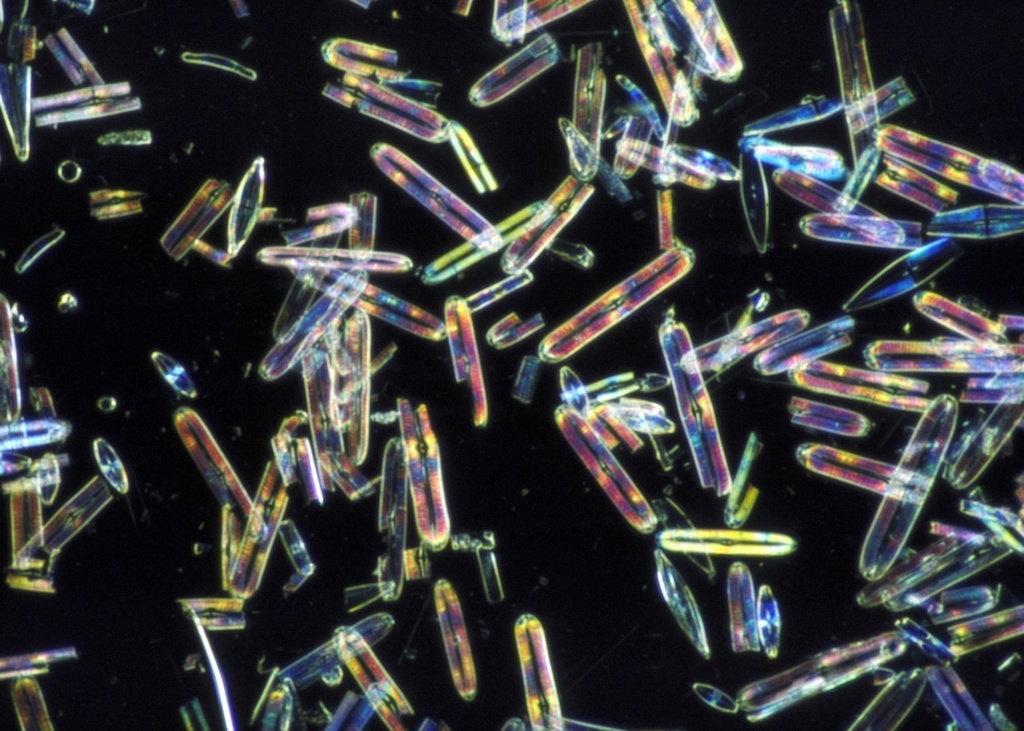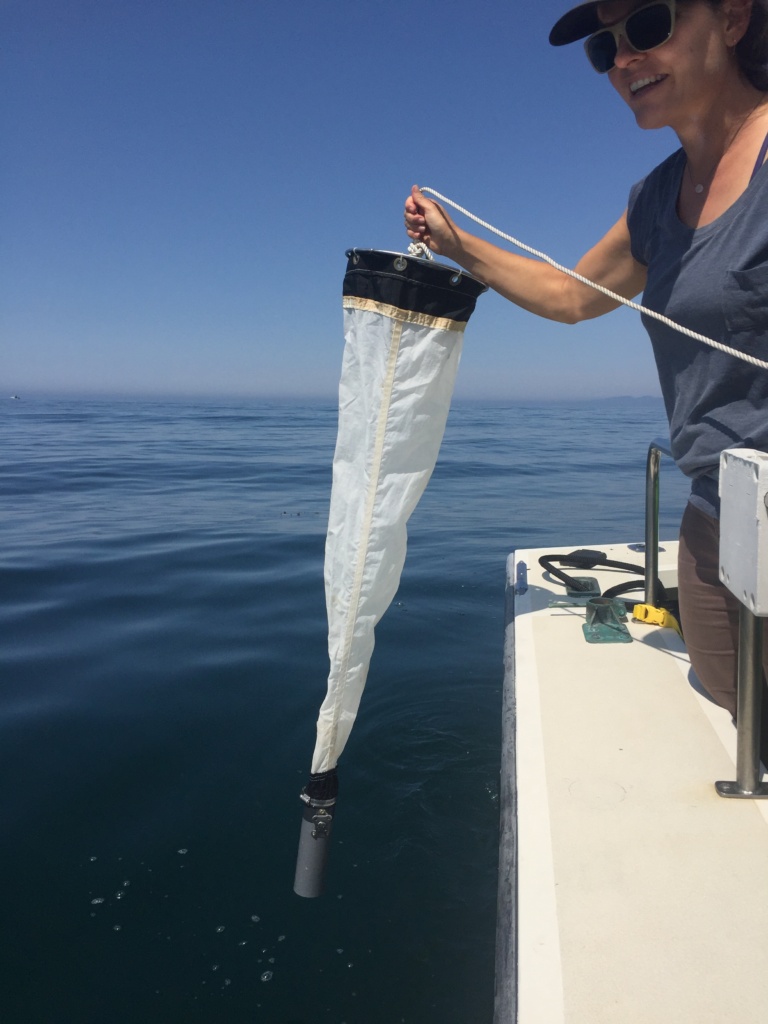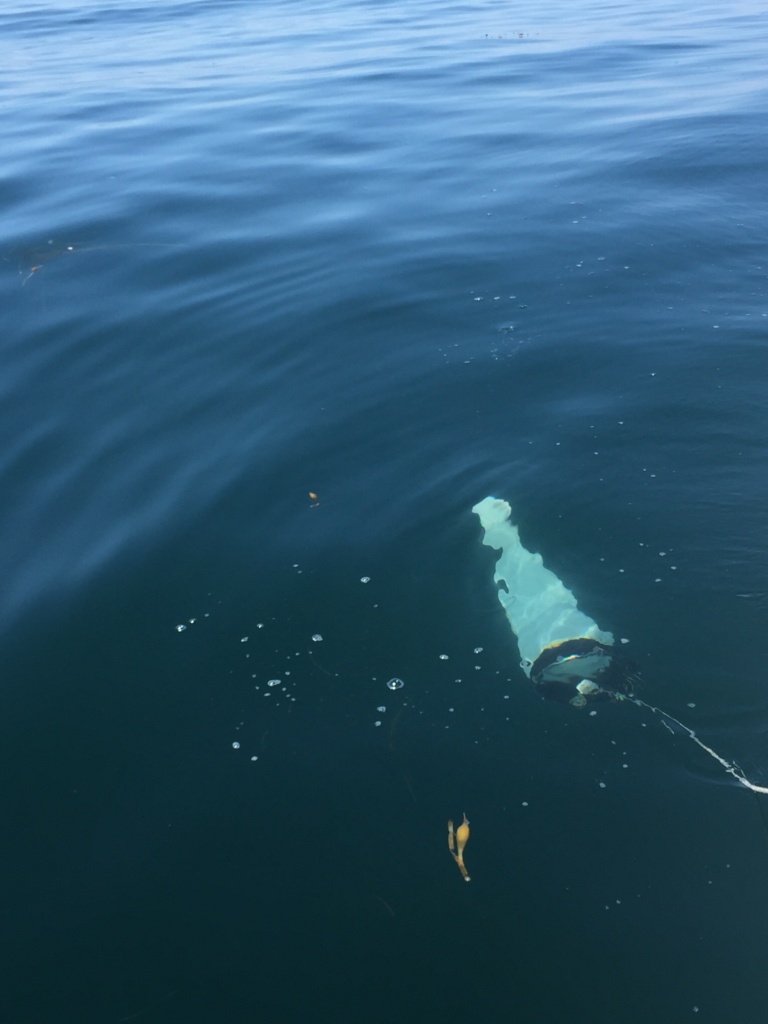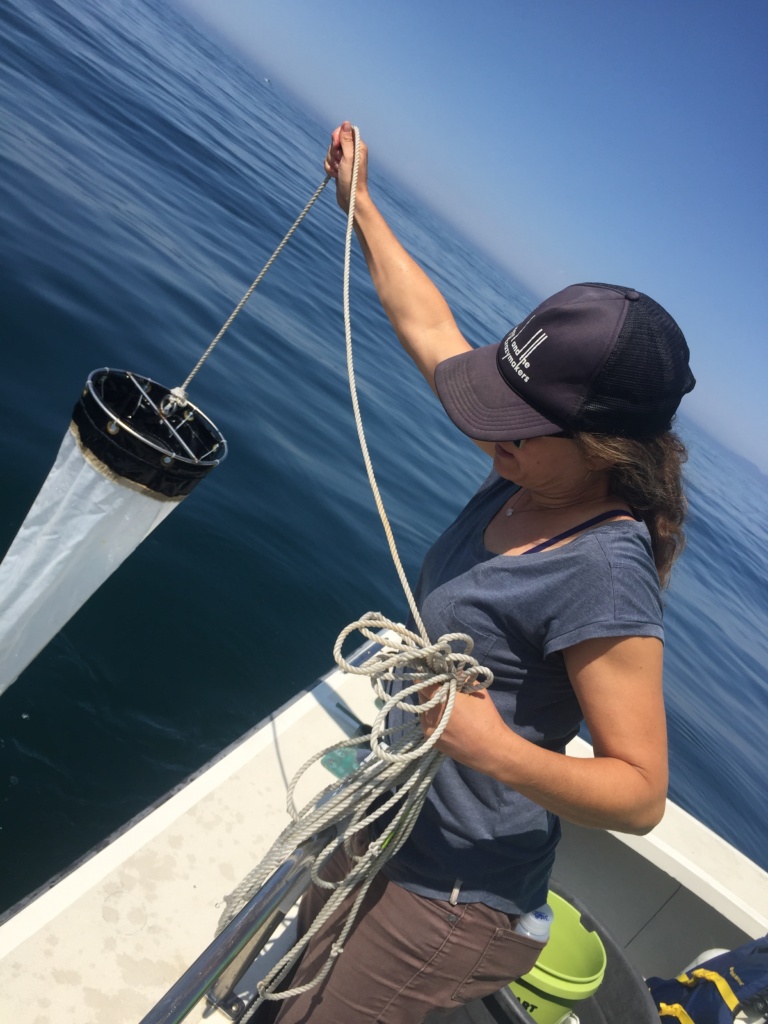Did you know that one teaspoon of ocean water can contain over a million living creatures called plankton? These microscopic plants (phytoplankton) and animals (zooplankton) drift with the ocean’s currents and play a fundamental role in many ocean systems. Plankton are tiny yet vital organisms.

Phytoplankton form the base of the ocean food web. Small marine creatures like zooplankton, crustaceans, and small fish eat phytoplankton and are in turn consumed by whales, squid, and larger fish, which become food for top ocean predators like sharks.
Phytoplankton concentration is influenced by several factors, including light availability, temperature, and nutrients.
Phytoplankton produce their own nourishment using the energy of the sun in a process called photosynthesis. During photosynthesis, phytoplankton release oxygen into the water as a byproduct. Scientists estimate that about 50% of the world’s oxygen is produced via phytoplankton photosynthesis.
Phytoplankton are also responsible for most of the transfer of carbon dioxide from the atmosphere to the ocean. During photosynthesis, they consume carbon dioxide and later release it through respiration or as biomass when they die and sink to the bottom of the ocean.

Why Monitor Plankton?
Channelkeeper conducts plankton tows to help monitor algal blooms in the Santa Barbara Channel. When environmental conditions in ocean water change, sometimes caused by an overabundance of nutrients such as nitrogen or phosphorus from fertilizer runoff, sewage treatment plants, and other land-based sources, phytoplankton populations can grow rapidly. This is called a “bloom.” Some blooms only result in a change of the water’s color (like the coccolithophore bloom that made the ocean look milky blue in Santa Barbara a few years ago), while others can be harmful, depleting oxygen in the water, blocking sunlight, or secreting toxins. Harmful algae blooms, some of which are known as red tides due to their reddish-brown color, can sicken and kill marine wildlife and negatively affect humans who are exposed to them.
While out on our boat conducting MPA Watch surveys, our team collects samples which we send to the California Department of Health. We do this in an effort to better understand harmful algae blooms and to protect both people and wildlife from their effects.
Tiny Creatures Provide Big Insight

Monitoring plankton populations is also key to assessing the health of the marine environment. Around the world, plankton are used as indicators of the health of water due to their short life span and sensitivity to both short-term and long-term environmental changes. Studying plankton helps scientists understand many things about the ocean, such as changes in fish populations, pollution, and climate. Learning about these tiny yet vital creatures can help us better understand important ocean systems and more effectively protect wildlife and the environment.
A Snapshot of the Planktonic Community
A plankton tow is a way to collect a sample of marine microorganisms. This snapshot of the planktonic community reveals what plankton populations are flourishing, any imbalances, and can provide clues about water quality.
From the deck of our boat, the R/V Channelkeeper, our team submerges a fine-meshed net with a jar at one end to collect the plankton sample. We send it down 30 feet in the water column and pull it back up using a rope. This is called a vertical tow (as opposed to pulling the net horizontally through the water). The net is sunk and raised three times. Then, we pour the liquid trapped in the jar into a fresh bottle containing a small amount of preservative. We place the bottles in postmarked boxes and mail them to the California Department of Public Health for lab analysis. These samples are analyzed for toxin-producing species, and they reveal trends in phytoplankton distribution along the coast.
What We Sometimes Find
Diatoms
These microscopic phytoplankton plankton are a food source for zooplankton. Diatoms have cell walls made of silica and many form long chains of cells.
Coccolithophorids
Large blooms of these phytoplankton create milky white areas in the ocean that are visible from space thanks to the calcium carbonate plates that make up their cell walls.
Copepod
Considered the most numerous multicellular animals on earth, these tiny crustaceans are a food source for many other zooplankton and fish.
Krill
These zooplankton are important source of food for many marine mammals and seabirds. They are an important part of the food web.
Meroplankton
The larvae of many bottom-dwelling invertebrates like crabs, starfish, mussels, clams, and lobsters all begin as larvae in the plankton before they settle on the bottom and become the more familiar adult creatures. These organisms are called meroplankton, because they only spend part of their lives among plankton, as opposed to holoplankton, or organisms that spend their entire lives as plankton.
Pteropod
These gelatinous zooplankton are relatives of snails. Pteropods feed using a mucous web that they trap food particles with.

Threats to Plankton
Ocean acidification poses a significant threat to phytoplankton. When excess carbon dioxide from fossil fuel combustion is absorbed by seawater, a series of chemical reactions occur that result in the increased concentration of hydrogen ions. This increase causes seawater to become more acidic and causes carbonate ions to be less abundant. These carbonate ions are essential for calcifying organisms to build and maintain their shells, skeletons, and other structures. Scientists speculate that a more acidic ocean will cause some types of plankton to grow slower and others to grow faster, changing the balance and affecting the food web.
Plankton are also threatened by plastic pollution and microplastics billions of tiny bits of plastic, less than five millimeters in size. Plastics float, block sunlight, and do not degrade. By blocking sunlight, plastics disrupt phytoplankton’s ability to produce energy through photosynthesis, causing them to die off. Zooplankton can also consume microplastics and die from blockages in their digestive tracts. Because they are a primary food source for many marine creatures, when plankton populations diminish, many other species are affected throughout the ocean food web.